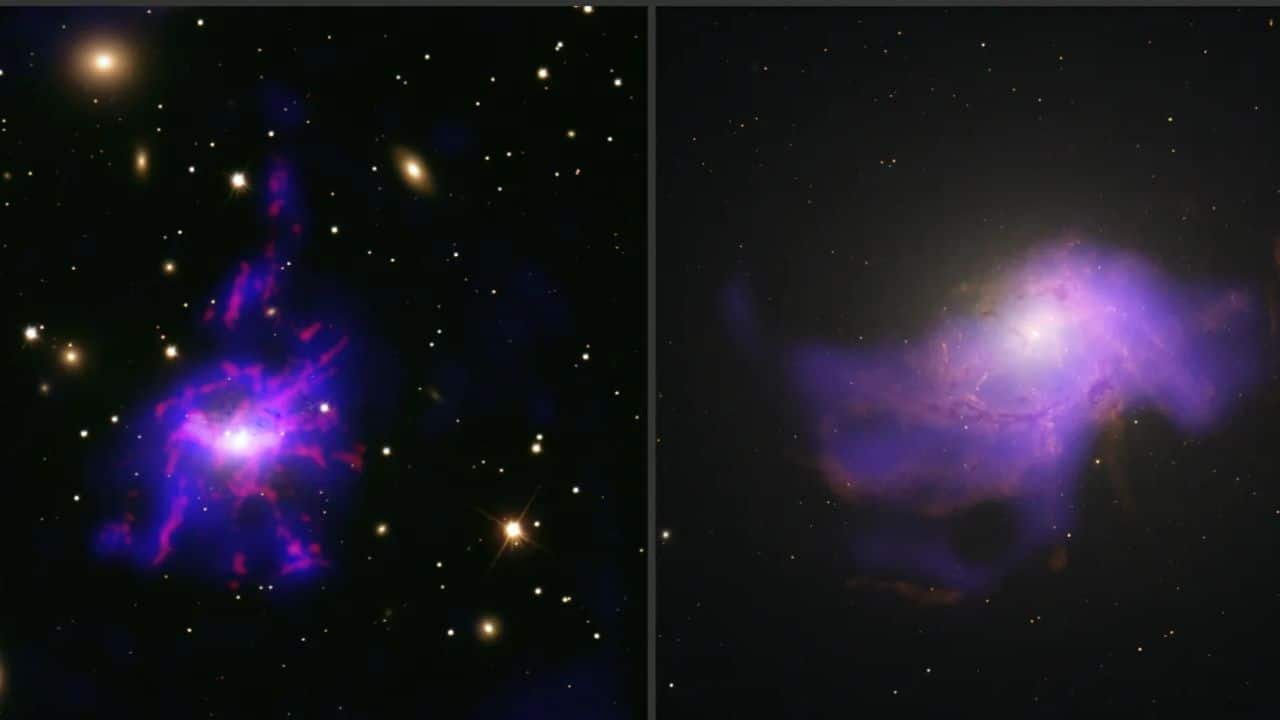



Astronomers have made a fascinating discovery about black holes. Using data from NASA’s Chandra X-ray Observatory and the Very Large Telescope (VLT), they’ve found evidence suggesting that massive black holes can feed themselves.
Black Holes and Galaxy ClustersThe research focused on seven galaxy clusters, including Perseus and Centaurus. These clusters house enormous black holes, millions to billions of times heavier than the Sun. Observations showed jets from these black holes drive the cooling of hot gas. This cooling process forms warm filaments, which then flow towards the black holes, sustaining their growth.
The data combined X-rays from Chandra, shown in blue, and optical observations from the VLT in red. These images helped scientists understand how outbursts from black holes influence their surroundings. Turbulence also plays a key role in the cooling and feeding cycle.
 In each image, a patch of purple with neon pink veins floats in the blackness of space, surrounded by flecks of light. At the center of each patch is a glowing, bright white dot. The bright white dots are black holes. The purple patches represent hot X-ray gas, and the neon pink veins represent filaments of warm gas. (Image: NASA)Cosmic Connections and Key Findings
In each image, a patch of purple with neon pink veins floats in the blackness of space, surrounded by flecks of light. At the center of each patch is a glowing, bright white dot. The bright white dots are black holes. The purple patches represent hot X-ray gas, and the neon pink veins represent filaments of warm gas. (Image: NASA)Cosmic Connections and Key FindingsFor the first time, astronomers found a link between hot and warm gas brightness in galaxy cluster centres. Bright regions of hot gas consistently matched bright warm filaments, supporting their model. These findings suggest black holes trigger cycles of gas cooling and self-sustenance.
Interestingly, these filaments resemble tails found in jellyfish galaxies. These galaxies lose gas as they travel, forming similar structures. This unexpected connection hints at a shared cosmic mechanism shaping these phenomena.
Collaborative Effort and Advanced ToolsThe study, led by Valeria Olivares of the University of Santiago, involved global experts from Chile, the United States, and more. It relied on the MUSE instrument on the VLT, which creates 3D cosmic views.
NASA’s Chandra programme is managed from Alabama, with science operations based in Massachusetts. This collaboration offers fresh insights into black holes, their behaviour, and their role in shaping the universe.
Discover the latest Business News, Sensex, and Nifty updates. Obtain Personal Finance insights, tax queries, and expert opinions on Moneycontrol or download the Moneycontrol App to stay updated!
Find the best of Al News in one place, specially curated for you every weekend.
Stay on top of the latest tech trends and biggest startup news.